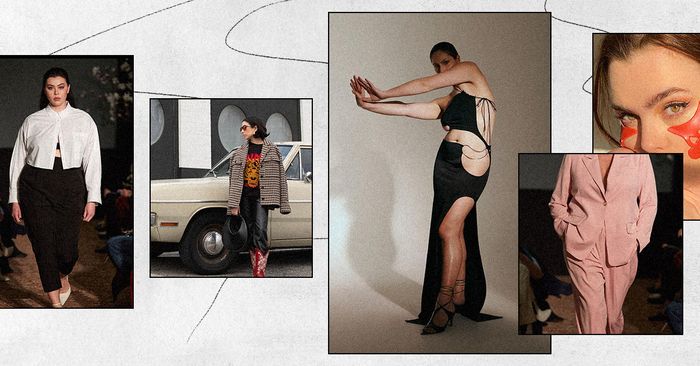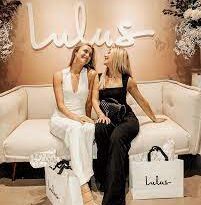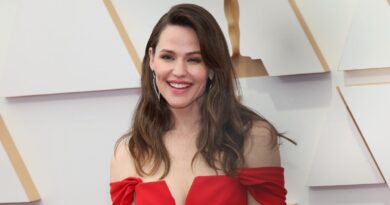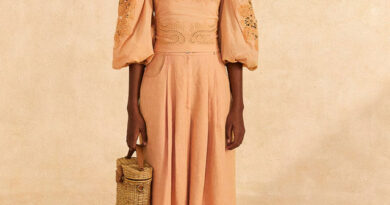6 Fashion Trailblazers Who Are *Actually* Making the Industry More Inclusive
Fashion’s relationship with bodies who don’t fit a certain narrow framework has always been fraught. The path to size inclusivity in an industry as image-dependant as this has been riddled with stereotypes, labels, and tokenizations. That’s not to mention the myriad others who’ve historically been marginalized, includng the trans community, those with disabilities, and largely anyone not thin, tall, cisdengered, and white. Yeah, I said it.
The industry has a long way to go still. The call to action has become somewhat of a battle cry, and we’re hearing the term inclusivity thrown around a lot. But what does it mean to be truly inclusive?
To attempt to answer that, we’re celebrating six trailblazers in fashion who are making serious strides towards a more holistic industry, one garment or post at a time. From the brands who are making seriously cool clothing for plus sizes to the content creator aiming to normalize disabled fashion people in your feed, these brands and individuals are making their mark.
Ahead, read our discussion on their experience in the industry, what true inclusivity looks like, and what they hope to see next in fashion.

Madeline Stuart is changing perceptions of what a model should be one shoot at a time. Born with Down Syndrome, the 25-year-old Australian has risen to international acclaim since her modeling career began in 2015 and has since walked the runway during fashion weeks the world over, including New York, Paris, London, and many more.
How long have you been modeling for and how did you get into it?
I went with my mum to a fashion parade and told her I wanted to model. Through hard work and dedication, I lost 20kg. I did it for health reasons too. I put the photos on my public figure Facebook page and it went viral. It was seen by millions of people within a few days and was published in 86 countries around the world. After that people from all over the world contacted me and asked me to walk on the catwalks, companies started working with me and I started traveling and advocating for the disability community.
What have been some of your career highlights so far?
Being named the first professional adult model with Down Syndrome, walking in 8 seasons of NYFW, Russia Fashion Week, Mercedes Benz fashion week China, Paris Fashion Week, London Fashion Week, Runway Dubai and many more. I was the first person with DS to be featured in Vogue and the only person in history with an intellectual disability to get a working visa in the USA. As an advocate working in Uganda, South Africa, the Ukraine, Lebanon, the USA educating people that people with disabilities are capable and deserve a place in our society. There have been so many amazing experiences, it is impossible to put them all on paper.
What kind of impact do you hope your work has on the industry?
When I first started modeling you never saw people with disabilities on the runway or in big brand activations, now seven years later we see people on most runways and in most campaigns. The world has changed and I feel very blessed to be a big part of that.


After being told she was “too big” for straight-size modeling and “too small” for the plus-size market, Charli Howard began publishing her writing on body image in the hopes of inspiring a new generation of confident young people. She also cofounded Squish Beauty, a skincare line with inclusion at its core.
How long have you been modeling for and how did you get into it?
When I was twenty-one (which is old by modeling standards), my friend sent my Facebook photos off to agencies, and suddenly they were interested again. I lost weight and started working as a “regular” model, but that didn’t work out for me – I was often considered the “curvier” girl on set as a size US 4 which is insane to me now. When I eventually got dropped for being “too big”, I wrote an online post that went viral, and then went to New York for work. It was there I discovered plus-size modeling, but then I was too small for that market. So I started representing the natural body I had and suddenly I started working for the first time in my life.
What kind of impact do you hope your work has on the industry?
I don’t know how much my work has impacted the industry, but I’d like to think it kick-started a conversation about treating models as people, and what the role of showcasing unhealthy bodies has had on women as a society. We forget how influential fashion is – girls grow up aspiring to work
in the industry, afford luxury clothes, or want to be beautiful. I want women to know they’re more than that.
How would you suggest beginning the process of unlearning all the negative self-talk we internalize from a young age?
I’d encourage people to be “body neutral”. It’s about viewing your body as simply a body and trying not to put too much emphasis on loving the way you look (which is where I think body positivity gets it wrong sometimes). That in itself can be draining. Hang around good people and cut out the toxic ones, eat delicious food, find a job that makes you happy, and you’ll start realizing that there’s
more to life than your looks anyway.


April Lockhart is a Nashville-based content creator who’s garnered a following on Instagram and TikTok for her colorful, eclectic sense of style. Recently, Lockhart launched a series entitled “Normalizing Disabled Fashun Girlies in Your Feed” where she shows off her daily outfits and celebrates her own disability.
What’s one thing you would change when it comes to conversations around ability inclusivity?
That these conversations would become more normal, and happen more often. That’s why I called my series “Normalizing Disabled Fashun Girlies” – because right now it’s very much not the norm. It still feels taboo for people to talk about disabilities, maybe they feel like they might say something wrong or hurt someone’s feelings. But for me, I would love for it to start to become part of the conversations we’re already having around inclusivity.
You’ve written before about how launching your series “normalizing fashion girlies with disabilities in your feed” was a pivotal moment for you both personally and professionally, marking the first time you showed off your disability in full rather than hid it. What prompted you to launch it?
It took me a few days to finally push “post” but I had made the decision that I really wanted this to be something I talked about. I had a small platform so I wanted to use it. I live and breathe in the influencer world (I work in influencer marketing for my 9-to-5), and I had never really seen a creator who I felt represented me. The more I thought about why we’re all on the Internet, the more I knew I wanted to do this – people are looking for authenticity, uniqueness.. And I felt an internal push to stop trying to hide that.
How do you think the industry can be more inclusive of all women?
There’s always some up-front work to be done for brands who aren’t already doing it – actively trying to add disabled creators to their existing community, working with them on campaigns, weaving them naturally into marketing. Empowering them and making them feel like an equally important part of their community versus a token moment. Sharing joyful moments lifting up disabled women.



11 Honoré began as a luxury retailer exclusively carrying plus sizes. Today, it’s putting its own footprint on the plus-size shopping space with a namesake collection and bi-annual New York Fashion Week Show. We’re chatting with Design Director Danielle Williams-Eke.
What was the impetus for launching 11 Honoré? What gap in the market do you hope it fulfills?
The impetus for launching 11 Honoré was and continues to be to serve the plus-size woman luxury fashion. For so many years the fashion industry has ignored this customer, especially in the high-end & contemporary markets. We strive not only to offer the most amazing clothing but also to build a community for our customers.
What we know is that the plus-size woman is not monolithic. With our diverse product assortment, we are able to serve women with varying personal styles and aesthetics. From casual elevated essentials to stunning evening gowns, we are the ultimate shopping destination.
What have been some of your career highlights so far?
My most recent career highlight was showing the 11 Honoré Spring ’22 Collection at NYFW. While I have had the opportunity to experience NYFW as a part of a design team, experiencing it as the Design Director has been the goal since the first day of fashion school. My journey to this point has not been easy but every internship, degree program, and position has been worthwhile.
What kind of impact do you hope your work has on the industry?
Ultimately I hope my work widens the eyes of the fashion industry. The plus consumer needs to be seen, acknowledge, considered and served in the broader fashion conversation. We can no longer be an option and my hope is that our work at 11 Honoré makes that reality.


abacaxi, which means pineapple in Portuguese, is a Brooklyn, NY-based line that focuses on hand-crafted materials, hand-dyed fabrics, and supporting local artisens.
How long have you been designing for and how did you get into it?
I studied visual art and textile design and after a few years of trying to find a way into the industry in NYC, finally began working as an assistant print and textile designer for other brands. I did that for several years and then first launched abacaxi while I was a freelance designer in 2013.
What is the ethos of the brand and what are some signature pieces you’re most known for?
Everything is designed with inclusivity and versatility in mind-I have a tendency to make things that can either be draped and worn and used in a multitude of ways, or be reversible, or stretch to fit several sizes. I’m very inspired by traditional dress- the sari for example – one garment that can fit almost anyone. This also goes hand in hand with sustainability, creating pieces that are meant to last and be re-used over time.
The Eva Dress has been one of my biggest bestsellers, I’m sure because of it’s flattering fit on all body sizes and shapes, and very reasonable price considering the amount and quality of the Indian cotton fabric. Because the bodice is made of elasticized smocking, it stretches and moves with you and allows for some changes in sizing from one year to the next. We just launched a mini-version of this dress as part of the new Stingray collection, in a plant-dyed custom weave organic cotton which I am super excited about.
The Divya Blouse and Divya Dress, named after my sister, are also signature pieces inspired by the sari. They are one-shoulder and have a pleated scarf attachment that can be worn in several different ways.


London-based designer Karoline Vitto caught out attention right off the bat. Not only are her garments works of art in their own right, but the label is also setting the precedent that skimpy silhouettes and sultry cutouts are suitable for any body shape.
How long have you been designing for and how did you get into it?
I have been working in design since I moved to London in 2016, after graduating from my BA in Brazil, and I have worked across a few different brands in studio roles. I have started designing for myself during my MA at the Royal College of Art (2019). The work I produced there became the creative basis upon which I built my brand.
What have been some of your career highlights so far?
Definitely the cover of Vogue Brazil with Precious Lee. I received a request from the fashion editor to create an exclusive look for her, which was such an incredible opportunity. The final photo looks stunning. Since then, my brand has been featured on several issues of Vogue Brazil and Portugal, which has been amazing to see. I love bringing the work back to where I am from and seeing how it goes through its own journey there.
What kind of impact do you hope your work has on the industry?
After being over a year in business as an independent online brand, facing all the challenges that a small brand does, rather than hoping to change the industry, I am more interested in creating a positive change for the end customers. I hope people feel more seen, and just part of the conversation. I grew up in the 90s and 2000s, when we all felt like we needed to look a certain way to be able to wear something. That has no place in my life anymore, and I hope I can help other people feel the same.

Coming up: For Trans Women, Fashion Is More Than Just Clothes—for These 4, It’s Everything
















